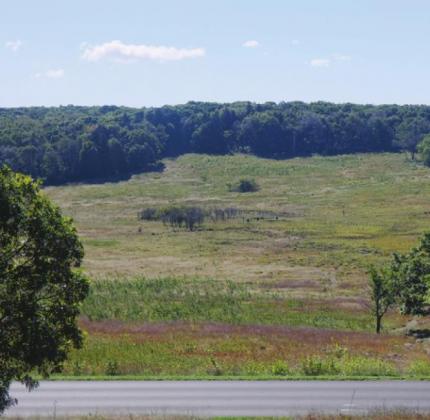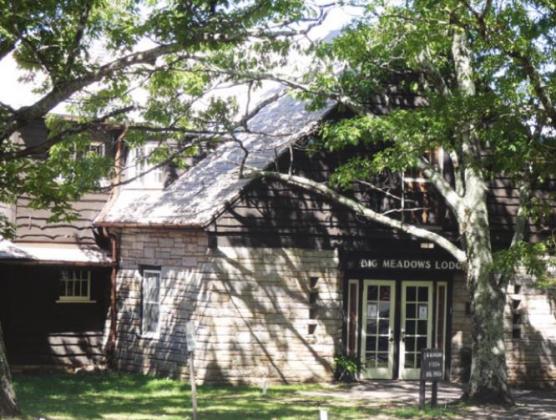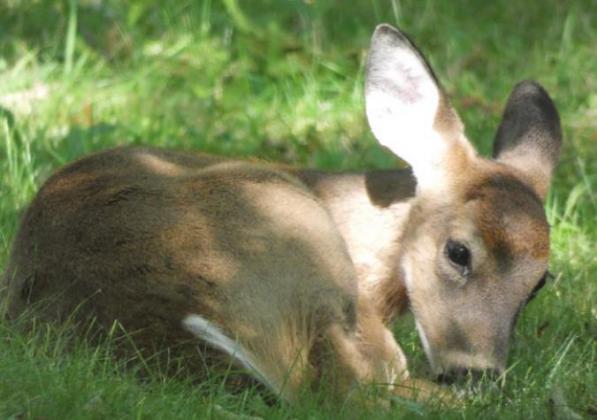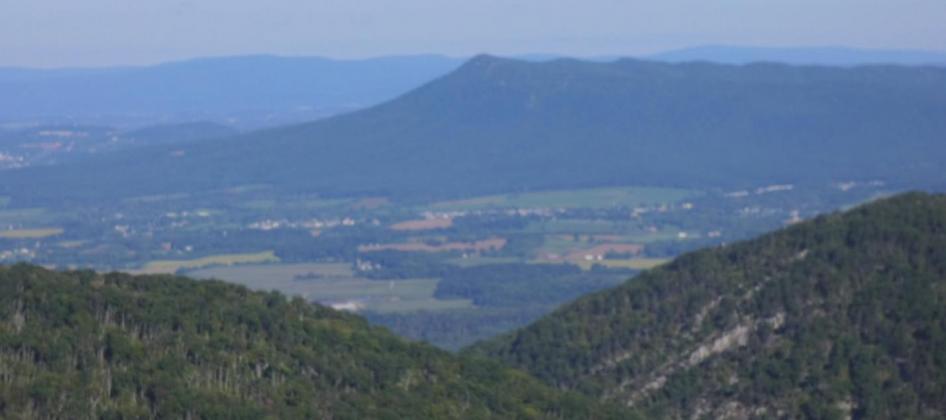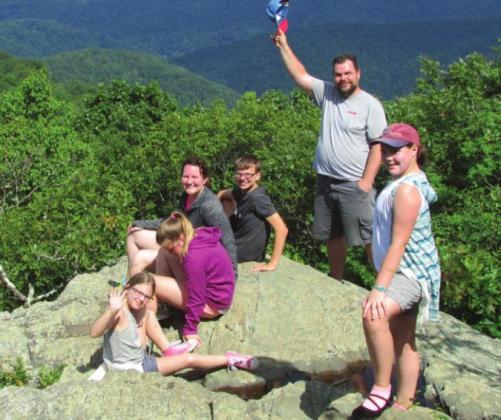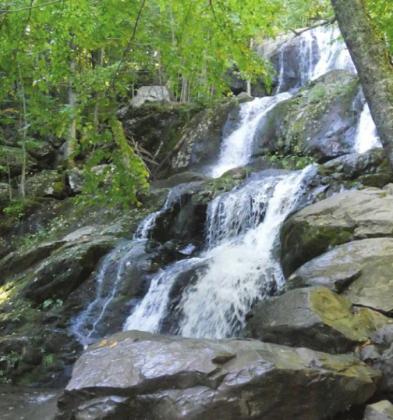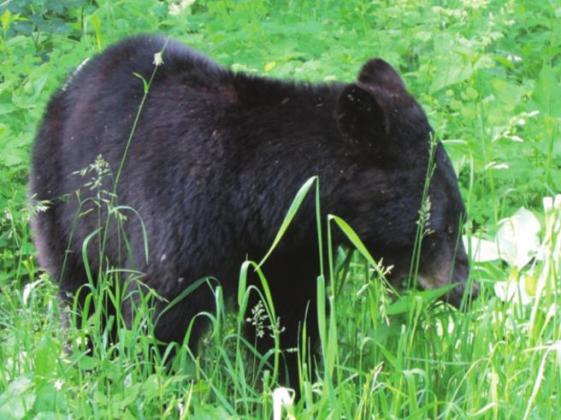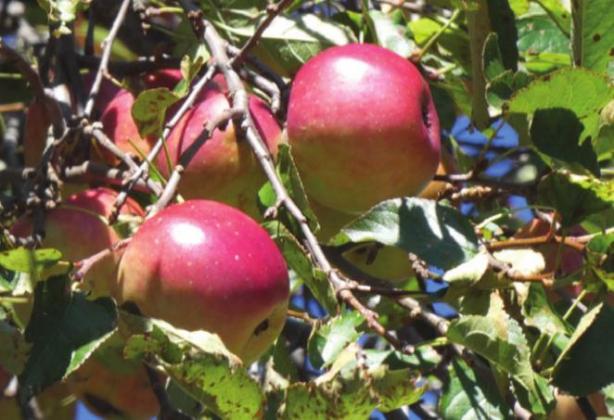Sponsored by Wood County Park District
WHEN WE LEFT OFF LAST MONTH, Shirley and I had been to the Smokies and up the Blue Ridge Parkway. This month, the trip continues through Shenandoah National Park in Virginia. I have mentioned the woman we met at the southern terminus of the Parkway who wanted to know if there was anything worth seeing or if it was just more of the same. The short answer is, “Yep, ‘fraid so.” The long answer will take a few more words and some pictures. Then you can decide if anything is worth seeing.
Skyline Drive is at the northern terminus of the Blue Ridge Parkway and continues for 105 miles through Shenandoah NP. If it were not for the entrance station at Rockfish Gap, you would probably never notice the change. As the lady said, it is just more of the same. But I’ll bet you enjoyed your mother’s chicken even if every Sunday it was just more of the same.
Still, there are a few things particular to Shenandoah. Unlike national parks in the West, Great Smoky Mountains, Blue Ridge Parkway, and Shenandoah were created from private landholdings. When Congress established Shenandoah NP in 1930, it did not authorize any money to acquire the land. Which is totally opposite to what would be done today when $8 or $9 trillion would be allocated. Back then, the Commonwealth of Virginia chipped in a whole million dollars, some people donated enough to buy an acre, and schoolchildren tossed in their pennies and even a few nickels. One of the reasons the park boundaries are so irregular is that they reflect places where the money ran out. (You undoubtedly recall that the 1930s were not the most prosperous in history.) The land for the national park was entirely a gift from the people of Virginia.
As in the Smokies and along the Parkway, there were residents who had to be convinced to vacate. Almost all of their homes and outbuildings were removed. At that time, much of the land had been stripped of timber and the farm land itself was heavily eroded. Though the mountain people called it home, many supporters of the park believed eviction was doing them a favor.
For almost 100 years, National Park Service protection has allowed the land to recover more or less naturally. Few park visitors are aware that the forest today does not at all resemble how things looked in 1930. Perhaps Congress refused funding because they had seen pictures of the place. Or been there. It is within easy reach of Washington.
Before we were RVers, Shirley and I were tent campers and, over the years, stayed at all of the campgrounds in the park. Late in the season, weather at higher elevations can be a little nippy or damp or both. So we took advantage of special promotions—lodge rooms and rustic cabins or cottages plus breakfast and supper that included anything on the regular menu. (I remember the duck breast as particularly good.) All at a significantly discounted price. Then somebody, probably a maintenance worker, said to himself, “Hold on a minute! Why do we have to offer promotional discounts when the park is full of leaf peepers?” That observation eventually percolated up to senior management and the discounts went away. But the lodges and cabins at Skyland and Big Meadows and the cabins at Lewis Mountain are still good options for those who prefer not to camp. There are also numerous commercial options just down either side of the Blue Ridge.
Our first stop this fall was at Loft Mountain Campground for two nights and then at Big Meadows for another three. I am being specific about that because, thanks to COVID, it is necessary to make reservations. We used to just pull in and choose a site. In 40 years or so, we were never turned away. If we decided to extend our stay, I went to the registration desk and re-enlisted.
In early July, Shirley and I discussed our fall trip. Should we return to Savannah? Maybe do the Natchez Trace? Or the good old Blue Ridge loop tour? Obviously, we settled on the latter. Shirley went online to check availability of sites at Big Meadows. Looked like they had plenty. So, I dithered trying to decide whether to do the loop south to north or north to south. Meanwhile, the sites were getting gobbled up, so we could no longer be choosey about where or how long we would prefer to stay. Which is why it was two days at Loft Mountain rather than the entire five days at Big Meadows. The lesson is you had better make a commitment well ahead. Shirley blames a near fiasco on the Y chromosome.
Big Meadows has long been our favorite place in the park. First, it is located almost exactly in the middle and convenient to some of our favorite hikes—Hawksbill, the Bearfence Scramble, and Dark Hollow Falls.
The main attraction is the Big Meadow itself. From the balcony of the Visitor Center there are great views of the open field on the other side of Skyline Drive. The meadow may have been created deliberately by Indian fires in order to keep the area open for better buffalo and deer hunting. There is archeological evidence of Indian presence dating back about 3,000 years. Later, white settlers grazed cattle there, and the Park Service, like the Indians, uses controlled burns to keep the forest from encroaching. The open area is now about 150 acres, but photos of the dedication ceremony for the park show that it was once much larger.
There are informal paths through the meadow created by tourists and deer just meandering around. Though the grass and shrubs are rarely more than knee high, it can be a little disconcerting to have a doe and a couple white-spotted fawns suddenly pop up right in front of you. Dusk is prime time if this sort of thing appeals to you. Also, early the morning we left, there were 28 deer right along the road.
Another prime-time choice is the ten-minute easy walk for the sunset from Blackrock near Big Meadows Lodge. Fifty-mile-long Massanutten Mountain runs through Shenandoah Valley parallel to the Blue Ridge. Beyond is a series of ridges blending together as the Allegheny Mountains march rank upon rank toward the horizon. Most visitors, though, seem to prefer the same view through the expanse of windows in the lounge at the lodge.
Slightly more challenging than Blackrock is the walk to Hawksbill, at 4,051 ft. the highest point in the park. The trail is steep in places as it climbs about 700 ft., but the round trip is only a couple miles. If you are paying attention. There are two trailheads with similar names a little over a mile apart on Skyline Drive. On one occasion, we pulled in at Upper Hawksbill and took the trail to the rock outcropping for glorious, unobstructed views. After descending, we found ourselves at Hawksbill Gap where it appeared that our vehicle had been stolen. One of us soon figured out that at a fork in the trail we had gone left instead of right and were at the wrong trailhead. This person waited in a shelter while the one responsible for the debacle hiked back up the Drive to fetch the van. In the rain. (That last line was intended as homage to A Farewell to Arms. It is less romantic than Hemingway’s ending. Almost as sad, though.)
Even more challenging, though less than half as long, is the Bearfence Rock Scramble, requiring a climb of only 275 feet. But it is an actual climb preceded and followed by a short hike. The summit provides one of the few 360-degree views in the park. But the Scramble is done for its own sake rather than for the view. It is definitely not for parents trying to carry small children or people with physical limitations. The “trail” is marked by blue hash marks on the rocks. Much of the time, you will need to hold on with both hands and pull yourself up while probing blindly for a toe-hold. Shirley and I enjoyed it with our children in the ‘70s and ’80s and with their children as recently as 2018. This year, Mrs. Hip and Mr. Knee spoke up to say, “Wait, wait! Are you sure this is a good idea?”
One hike we do continue to enjoy is to Dark Hollow Falls, a 70 ft. cascade. A tiny trickle near the top of the ridge joins with several others to form the principal tributary of the Rose River. There is no view from the head of the falls because of intervening trees and underbrush. Besides, the rock surfaces are damp, mossy, and extremely hazardous. You don’t want to go out there. You do want to continue down the face of the bluff to the plunge pool for a much better view. If you are stealthy, you might even approach the sides of the pool where brook trout with bright orange fins and bellies shelter beneath overhanging rock ledges.
The trout reminded me of another destination within easy reach of Big Meadows. Rapidan Camp was President Hoover’s private retreat during the stressful days of his administration. Like Camp David used by later presidents, it was for working vacations and confidential meetings. The lodge and two buildings for guests are still standing and furnished as they were a century ago. At the end of his term in office, Hoover donated his camp to the government, and it was later absorbed when the national park was created. Park visitors are allowed to roam the grounds when the facilities are not being used by members of congress, cabinet officers, and other government officials.
Before COVID, the park offered transportation down a gravel road and a ranger-guided tour. Shirley and I always hiked down via the Milam Gap Trail because we had additional things on our agenda and didn’t want to stick with the tour group. These days, tours require reservations through recreation.gov. Visitors, rather than being crowded into a park van, must walk four miles, round trip, from Milam Gap. The road from Big Meadows may appear easier walking, but I wouldn’t recommend it. That route is six miles each way.
Hoover preferred to relax by fly fishing the Rapidan. Access to the stream was right outside his door. So, we did likewise. But it is not the beautifully poetic kind of fly fishing with lines unfurling in long, graceful arcs. Much of the Rapidan at that elevation is only a couple feet wide, bordered by underbrush, as it tumbles over and between boulders. The good news is, trout hang out where there is just a foot or two of pocket water. You make short, delicate casts to likely spots and wait for colorful brookies to smack the fly. They are not at all fussy.
If, like the woman on the Blue Ridge Parkway, you eventually become bored with more of the same, there are numerous options within easy reach of Shenandoah NP. The first that comes to mind is Jefferson’s Monticello. He built there because he loved the view of the Blue Ridge from his “Little Mountain.” Loved it so much that he located his outbuildings and vegetable gardens down the slope, below eye-level, so they would not get in the way of his view.
If you have already visited Monticello, you might want to consider the homes of Madison (Montpelier) and Monroe (Ash Lawn-Highland). On your way back to Shenandoah, refresh yourself at one or more of the two dozen wineries that have sprung up on the eastern slopes of the Blue Ridge. If the last Southern wine you tasted was scuppernong, you have a pleasant surprise in store. Try some viognier.
This year, we did the Smokies-Parkway-Shenandoah loop, but there are numerous variations on the theme. From Shenandoah, as all parents should do, we took the kids to Washington and Mt. Vernon, Colonial Williamsburg, Jamestown, and Yorktown where the British surrendered to end the Revolution. Just a few miles up the James River from Williamsburg are Colonial-era mansions open for tours. My personal favorite is Shirley Plantation. There are numerous Civil War battlefields: Chancellorsville, Fredericksburg, the Wilderness, and Manassas, which counts as two for both battles fought there. Not to be outdone, Winchester changed hands 72 times as Confederates and Unionists pushed each other back and forth. One year, we returned home via a modest detour to Gettysburg.
But, wait, there’s more. People who hate history sometimes love the beach. So, there is Virginia Beach. Or, our preference, the beach at Assateague out on the Delmarva Peninsula where 300 wild ponies roam free. Sometimes we go a little farther south. In 2019, for example, we continued from Shenandoah to the Outer Banks then Charleston and Savannah.
So, if you grow impatient with more of the same, there are always additions and alternatives that can make your Shenandoah trip just a walk in the park.
LeMoyne Mercer is the travel editor for Healthy Living News. If you are contemplating a trip, you might want to see pictures of numerous destinations on his blog, anotherwalkinthepark.blogspot.com.

